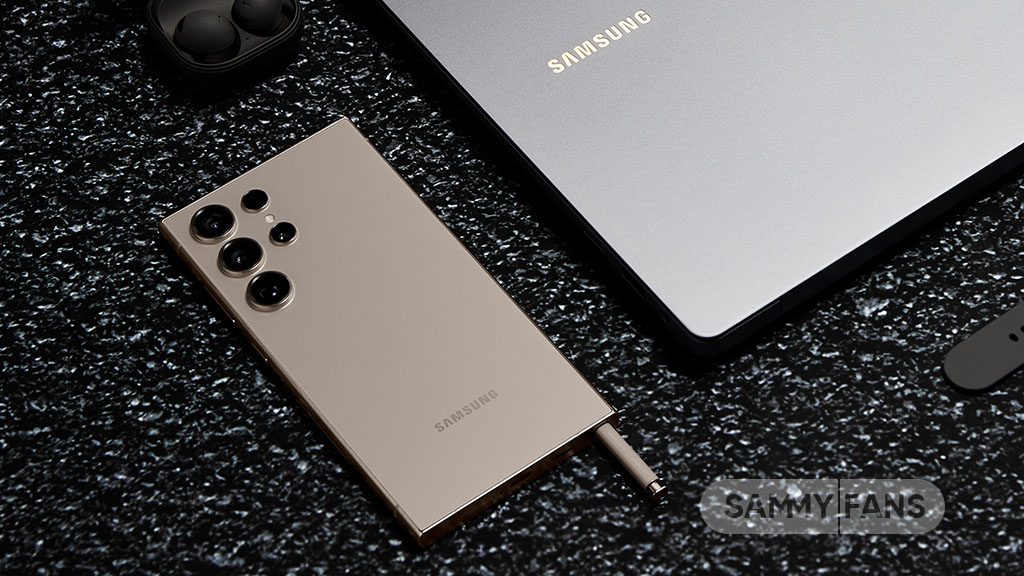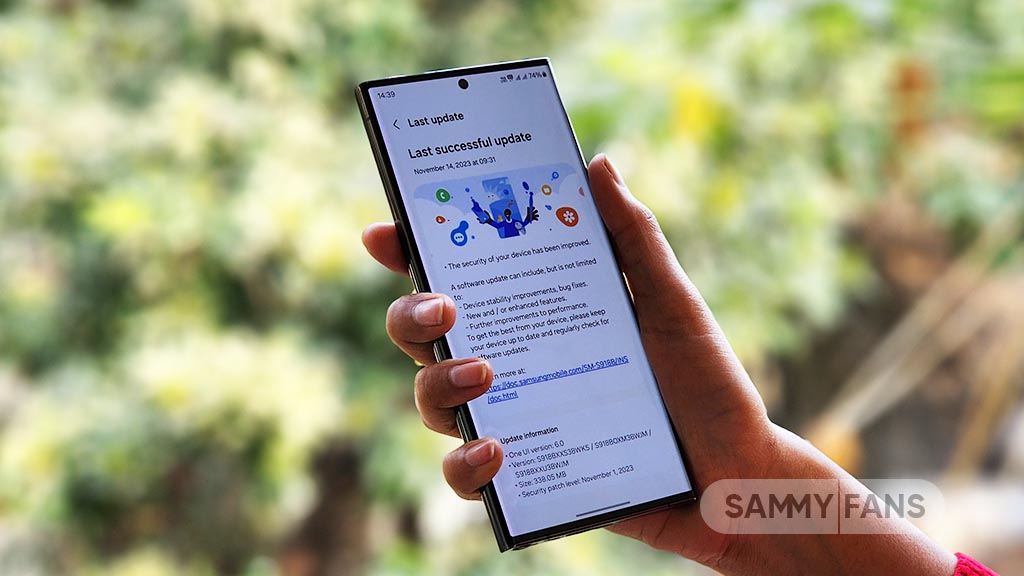Opinion
Why I will skip the first One UI 7.0 beta on my Galaxy S24 Ultra

When Samsung releases One UI 7.0 beta, the Galaxy S24 users will be very excited to try out the new features and improvements. However, despite my serious excitement to try the cutting-edge features, I’ve decided to skip installing the first beta release of One UI 7.0 on my Galaxy S24 Ultra. Instead, I will go for the 2nd One UI 7.0 beta build.
This decision isn’t made lightly but is based on past experiences with early betas, insights from tech communities, and an understanding of what beta testing involves. Here’s why I’m choosing to wait rather than dive into the first wave of this new One UI version.
Here are some reasons you might decide before installing the first One UI 7.0 beta on your Galaxy S24 Ultra:
1. Stability Issues: Beta versions often come with bugs and stability issues. Since this would be the first beta, it might have more common problems that could affect daily usage, like app crashes, battery drain, or even critical features not working properly. From my experience, the initial betas are not optimized for battery life, potentially leading to worse battery performance than what you’re used to with a stable version.
2. App Compatibility: There’s a high chance that some apps might not be optimized for One UI 7.0 yet. This could lead to apps not functioning correctly or at all, which could be particularly frustrating if these are apps you rely on for work or personal use. As we have seen in the past, some beta versions might have issues with payment and banking apps due to changes in APIs or security certificates, which could be a significant inconvenience.
3. Performance: Beta software can cause unpredictable performance. There might be slowdowns, UI lag, or unexpected reboots, which could hamper the user experience.
4. Availability: Beta programs often roll out in phases and might not be available for all regions or carrier-specific models at once. The first beta might not include all the features slated for the final release, or some features might not work as intended. Waiting for a later beta or the final release ensures you get a better experience.
5. Serious Issues: Once you install a beta, rolling back to a stable version might require a full wipe of your device, which means backing up data, reinstalling apps, and setting up your phone again, which is time-consuming. Although rare, there’s always a risk with beta software that you could encounter a bug that might lead to data loss. Sometimes, participating in beta programs can complicate receiving future OTA updates.

Here are some reasons why you might decide to install the 2nd One UI 7.0 beta instead of the first on your Galaxy S24 Ultra:
1. Improved Stability and Features: The second beta typically addresses many of the major bugs and stability issues found in the first beta. The second beta could introduce more features or refine those that were introduced in the first beta, providing a better experience.
2. Improved Performance: With feedback from the first wave of beta testers, Samsung likely optimize performance further. This could mean smoother animations, better battery life, and overall improved system performance in the second beta. Samsung might implement changes based on user feedback from the first beta.
3. Reduced Risk of Major Bugs: In the second beta, many of those critical issues would typically be resolved. Developers and Samsung have more time to ensure that popular apps work well with the new update by the time the 2nd beta rolls out. If there are any security vulnerabilities discovered in the first beta, they’re more likely to be patched in the second build.
4. Opinions: By waiting for the 2nd beta, you get to read reviews, watch videos, and see discussions about the first beta’s pros and cons, giving you a clearer picture of what to expect.

Going for the second beta could offer you a more refined and stable version of One UI 7.0, with less risk of encountering disruptive bugs or missing features that might be critical for daily use. However, remember that participating in any beta program still carries some inherent risks, like potential data loss or unexpected behavior, but the second iteration is generally safer than the first.
The promise of new features is appealing, but the likelihood of encountering bugs, incomplete functionality, and performance issues suggests a more cautious approach. By waiting for the subsequent beta version or the official release, I opt for a more stable, refined, and fully featured user experience, ensuring that my device continues to serve as a reliable tool for both work and play. I am excited for the One UI 7.0 beta program but my decision to skip the first One UI 7.0 beta on my Galaxy S24 Ultra stands firm. What are your thoughts on this?
Opinion
Here’s why Samsung’s One UI 7.0 Beta should go global

If you’re anything like me, a dedicated Samsung Galaxy user, you’ve probably been on the edge of your seat waiting for the next big update: the One UI 7.0, which will be based on Android 15. Samsung’s history with software updates brings excitement and, at times, disappointment due to variations in update availability across different regions. Here’s why I believe Samsung should roll out the One UI 7.0 beta program globally.
First, let’s talk about consistency. When Samsung releases a beta program in only select regions, it creates an inequality in user experience. My friend in South Korea might be enjoying the latest features, while someone in Europe or Africa continuously checks for their latest software update. By expanding the beta program, Samsung ensures that all users, regardless of location, can contribute to refining the software.
There are surely some challenges in every region – different network operators, app ecosystems, and varying user behaviors. Based on my experience, using a phone in New York compared to a remote country can give different performance insights.
A global beta release means Samsung gets feedback from broader users, leading to a more robust and optimized final release. Imagine the battery life improvements they could make with data received from users in extreme temperatures.
There’s a simple theory to catch bugs, you can catch many bugs with many hands. When Samsung limits the beta program to a few regions, they’re using a smaller net to catch these bugs.
Let me share my experience with you about beta testing. In 2019, I installed the Android 10-based One UI 2.0 beta build on my beautiful Samsung Galaxy S10+. After installing the One UI 2.0 beta update, I, along with several other Galaxy S10 users, found ourselves locked out of our devices.
The update caused the phones to reject all forms of authentication, including PINs, passwords, and patterns, effectively making it impossible for us to access the phones after a restart. Even the Remote Unlock feature, which could be used via Samsung’s Find My Mobile service, did not resolve the issue as expected. We could delete biometric data, but the device wasn’t accepting the new authentication method.
After that, Samsung released a hotfix patch to fix the lockout issue. Users had to downgrade back to Android 9 Pie and then upgrade again to the beta with the included patch. Until the fix was available, Samsung advised users to change their lock screen security to either swipe or none to prevent being locked out. This issue highlighted the risks associated with beta testing new software versions.
READ MORE:
What I can see now is that Galaxy users are eager to participate in these beta programs. There’s a collective feeling of, “Why not us?” when beta programs are announced for limited regions. From a personal perspective, being part of a beta program isn’t just about getting the latest features; it’s about contributing to and testing them first. They want to give direct feedback to the developers so that we can all have some useful features.
So Sammy, if you’re listening, bringing the One UI 7.0 beta to every region isn’t just good for us users; it’s smart business. It ensures your software is perfect, leads to a richer feature set influenced by diverse user needs, and builds loyalty among your Galaxy users all around the world. Here’s hoping that by the time One UI 7.0 rolls out, we’ll all be part of this beta program, no matter where we are in the world.

When is One UI 7.0 beta coming?
Now, about the timeline – from what we’ve gathered, Samsung plans to tease developers with a beta towards the end of 2024, with whispers around the tech community suggesting a public beta could follow soon after.
But here’s where it gets exciting – features like a redesigned battery indicator, new animations, and perhaps even an overhaul in system design are on the table.
Opinion
Do you really need security patch software updates every month?

In today’s world, where we are connected to technology, the security of our devices is essential. But does this mean you need to update your phone with security patches every month? Let’s discuss this in this article.
Before talking about Samsung, we will discuss Apple’s software update policy. Apple is well-known for keeping its devices very secure. Apple designs both the hardware and software of its devices, allowing for seamless integration. If there’s any security flaw found, Apple can push out an update quickly. Apple’s software policy includes not just major upgrades but also minor updates and Rapid Security Responses, which are quick fixes for immediate threats.
While Apple doesn’t strictly stick to a monthly schedule for all updates, they ensure that major security patches are rolled out as soon as they’re ready, which can sometimes feel like you’re updating every month or even more frequently. In addition, Apple devices receive software updates for several years (5-6 years), ensuring even older models aren’t left vulnerable. Unlike many other companies, Apple keeps even its older devices up-to-date with security fixes, while others often leave them behind.
About Samsung, while doing well with its update schedules, the company could adopt a few strategies to enhance user trust and security. Like Apple, Samsung could work towards even more streamlined updates where security patches are smaller, faster, and less annoying. The South Korean company has recently extended the software support policy for its new devices, promising up to 7 years of OS updates, a policy highlighted at SDC 2024. Offering security updates for longer periods would not only improve security but also customer loyalty.
There must be a detailed description or changlog with every software update, which could help users understand the importance of these monthly updates. Apple’s detailed notes on what’s changed or fixed can be a good example. Samsung’s monthly software update changelog usually includes “The security of your device has been improved”.
What about an option to choose? Allow users to opt for different update frequencies. Those who want the Iron Man security could stick with monthly, while others might choose a less frequent schedule, let’s say quarterly. Sometimes, you might get up to 3-4 software updates in a single month, with the same changelog.

The company should people know why software updates matter. Sometimes, users skip updates because they don’t know how crucial they are for keeping their devices safe, not just because it’s a minor annoyance.
Some Pros and Cons of Frequent Security Updates:
Advantages:
- The most obvious benefit is enhanced security. New patches fix vulnerabilities that could otherwise be exploited by malware or hackers.
- Often, these updates also bring performance improvements or bug fixes that can make your device run smoother or faster.
- Sometimes, these updates might include minor new features or enhancements.
Disadvantages:
- Frequent updates can be annoying. They require downloads, sometimes a restart, and occasionally, they might bring new bugs to your primary phone.
- There’s a high chance that an update might not play well with a few third-party apps until those apps are updated.
- For those with limited internet/mobile data, frequent updates can consume a significant amount of internet.
My Opinion:
Do you really need those security updates every month? The answer leans towards YES, if you want to keep your device as secure as possible. However, the ideal scenario would be for companies like Samsung to make these software updates less of a task and more of a seamless part of having a smartphone.
Opinion
Should Samsung consider revamping its One UI update approach?

When keeping our Samsung Galaxy devices fresh with the latest software, there’s always an atmosphere of excitement and a hint of frustration. As Samsung officially confirmed the One UI 7.0 beta delays, Samsung’s update policy might need a rethink. Let’s dive into what’s happening and how Samsung could potentially polish its update game.
If you’re polishing your Galaxy S24 and waiting for the One UI 7.0 beta, you’re not alone. As per several reports in the past, the beta has been in internal testing since mid-year but still isn’t ready for public testing. This delay isn’t just a minor inconvenience; it’s a signal that perhaps the approach to software rollouts needs tweaking.
Samsung’s strategy has often been to prioritize newer Galaxy devices for the latest software updates, which is understandable from a marketing perspective. In the recent rollout, Samsung rolled out the One UI 6.1.1, the latest stable One UI version, to the Galaxy S24 series, which took an additional 15 days to reach the Galaxy S23 series, the device launched back in 2023, the same update took more than a month to appear for the Galaxy S22 series, launched in 2022.
This irregular rollout often leads to a terrible user experience. Imagine buying a high-end tablet only to find out that your friend or colleague’s newer Galaxy phone has the latest features first.
We can understand the above statements but here’s where things get too much. Even after prolonged beta testing periods, major bugs appear in the final stable releases. For example, after the 9 different One UI 6.0 beta builds released for the Galaxy S23 series last year, the stable update brought some serious bugs to the S23 trio.
This scenario begs the question: if beta testing isn’t catching these issues, what is going wrong? Users expect a seamless transition when they update their devices, not a troubleshooting session.
Here are my suggestions for Samsung’s Update Strategy:
1. Transparency: Samsung could benefit from setting clear, realistic timelines for updates and sticking to them. If there’s a delay, communicate it early. Transparency builds trust.
2. Update For All: Instead of staggered updates, why not aim for a more simultaneous release across eligible devices? This would help users with slightly older models feel their devices are still up-to-date.
3. Extended Beta Program: While beta testing is great, expanding this phase to include more real-world scenarios might help in catching serious bugs. More diverse testing environments could lead to more robust software. In the last 6 years, Samsung has kept the beta program limited to 7 countries only.
4. Post-Update Support: After rolling out major updates, there should be an immediate follow-up plan for quick patches. A dedicated update support team could swiftly address unexpected or serious issues.
5. Longevity Promises: Samsung’s recent move towards promising longer support for devices is commendable, with up to 7 years of software support latest Galaxy devices. However, these updates need to be timely and not just an afterthought.
6. Feature availability: When new features are introduced, Samsung could work on exporting some useful features to older but still eligible devices. This not only keeps the older devices relevant but also shows goodwill towards customers who aren’t upgrading every year.
My Opinion:
Samsung’s One UI software has transformed the Android experience for Galaxy users, making smartphones not just tools but companions in daily life. However, with great innovation comes the responsibility of maintenance. As we look towards One UI 7.0 and beyond, perhaps it’s time for Samsung to adopt a more user-centric update policy. By doing this, Samsung keeps the happiness of new updates alive, without the annoyance of waiting too long or dealing with errors after receiving them. In the quick-moving tech world, staying updated means not just getting new stuff, but also having a smooth and fun time using your device, no matter which model you have.












